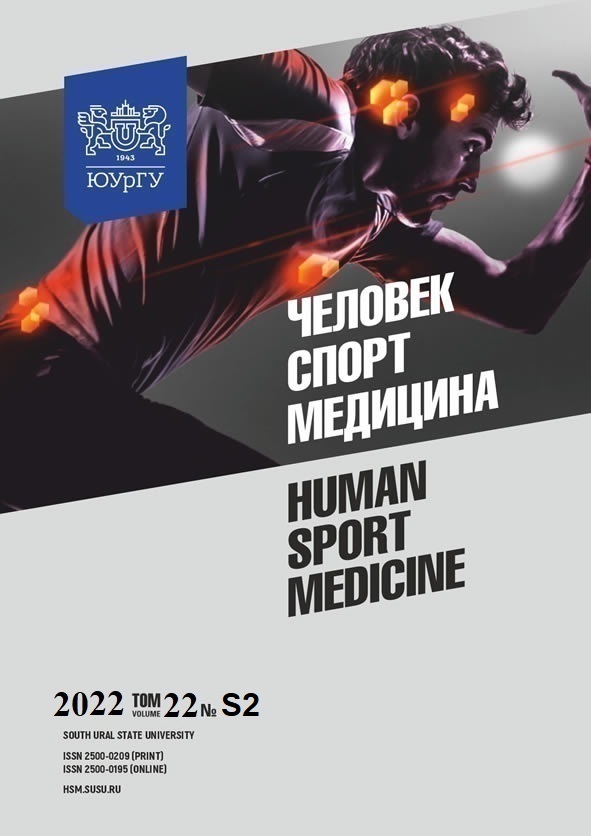COMPREHENSIVE PERSONALIZED SUPPORT FOR PHYSICAL EDUCATION AND SPORTS ACTIVITIES OF STUDENTS
Abstract
The aim of the study was to substantiate the most informative and accessible parameters of physical fitness, physical development, morphofunctional status, and functional asymmetry for a comprehensive support of physical education and sports activities among university students. Materials and methods. The study involved 547 male students of the first and second years (Lomonosov Moscow State University) involved in different physical education and sports activities. The battery of physical fitness tests was defined based on the analysis and review of Russian and foreign literature. Physical development and morphofunctional aspects were assessed by using standard methods (46 parameters). The features of the lateral organization of motor and sensory functions were described according to E. Homskaya and I. Efimova. Results. Based on the data obtained, a non-linear 10-point system for the assessment of physical fitness was developed. The informative morphofunctional parameters that influenced positively or negatively examination results were identified and included body length and mass, muscle mass, fat mass to body mass ratio (total and percentage), body area, bone mass percentage, body circumferences, vital capacity, hand strength. The results of speed-strength and strength tests were found to be better in students with no or a smaller number of symmetrical or left-sided lateral signs in motor and sensory systems. Conclusions. An optimal battery of tests and a table for the assessment of physical fitness have been developed. The most informative morphofunctional parameters that influenced positively or negatively examination results have been identified. Differences in the results of students with different signs of functional asymmetry were found.
References
References on translit















